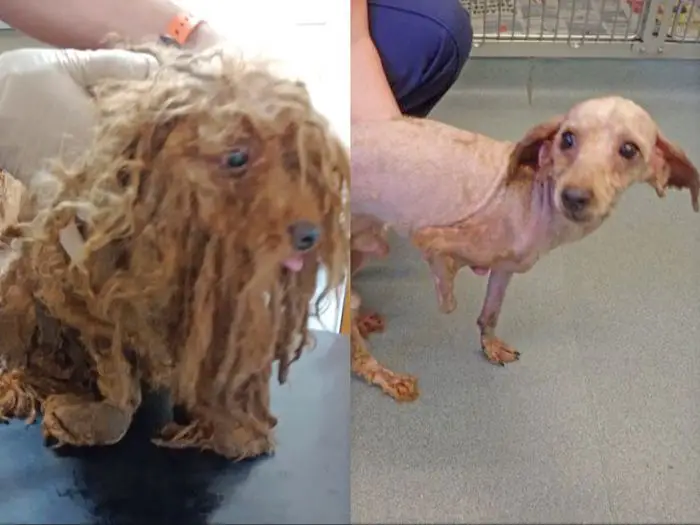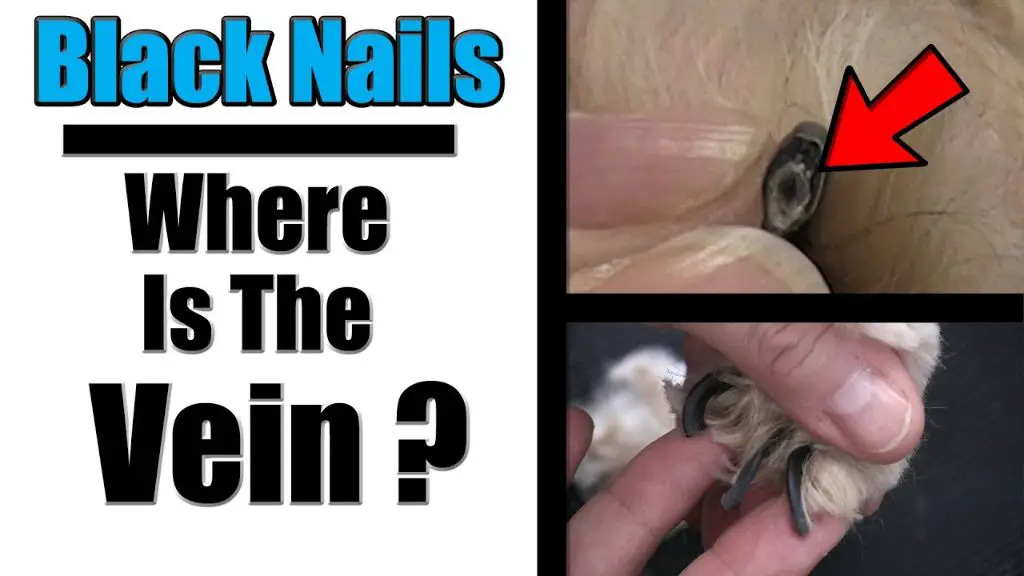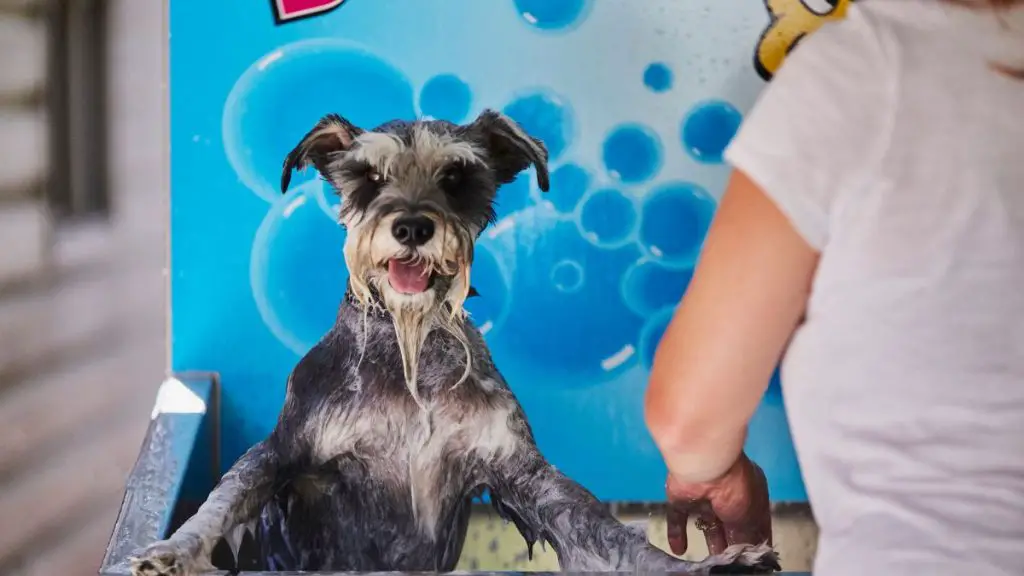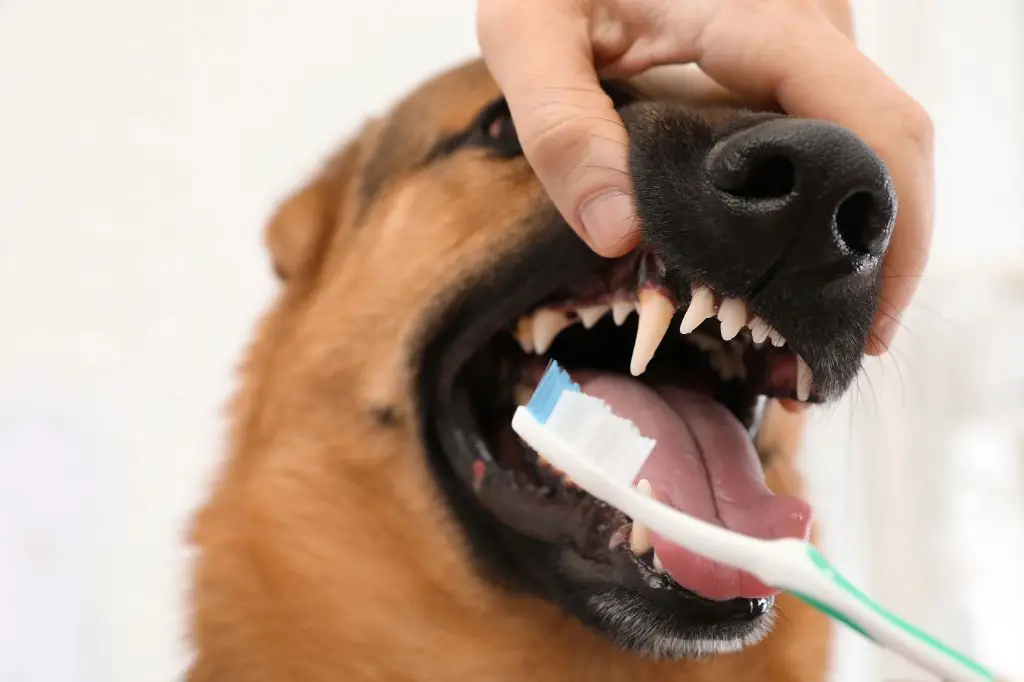Introduction
Dog grooming can be very challenging at times, even for experienced owners. It’s easy for dogs to get matted fur, untrimmed nails, and dirty teeth if their grooming is not properly maintained. Many dogs also dislike certain grooming tasks like bathing and nail trimming. Neglecting proper grooming routines with your dog can lead to numerous health issues. However, it’s understandable that owners may also struggle with some of the expected grooming duties. It’s an ongoing process to find the right techniques and equipment to make grooming easy and comfortable for both you and your dog.
Some of the most common struggles owners face with dog grooming are matts, nail trimming, bathing, brushing, ear cleaning, and teeth brushing. Navigating sensitive areas, dealing with anxiety, and avoiding injuries are also difficulties owners may encounter. If you are struggling in any of these areas, rest assured that you’re not alone. There are many tips and tricks to make grooming easier, as well as professionals who can help. The key is being patient, staying positive, and finding the right approach for you and your dog.
Matting
Matting is one of the biggest grooming challenges for dog owners. Matted fur occurs when loose hair and debris become trapped in a dog’s coat and forms knotted clumps. This most commonly happens in breeds with long, thick coats that shed frequently. Matting can occur anywhere on a dog’s body, but is especially prone around the ears, legs, belly, tail, and backside.

Matted fur does not allow air to properly circulate to the skin, creating a moist environment ripe for bacterial and fungal infections. Tight mats can also cause skin irritation, rashes, hot spots, and hair loss. Left untreated, severe matting can restrict movement and cause pain. In extreme cases, mats can cut off blood flow or trap waste against the skin, leading to tissue damage or infection.
To prevent mats, regularly brush problem areas and keep the coat trimmed shorter if possible. Use a detangling spray before brushing to loosen clumps. Check for any forming mats after playtime outdoors. Remove small mats right away by gently working apart the hair with fingers or a dematting comb. For large mats, never pull or cut them off, as this can harm the skin. Instead, patiently pick apart what you can or ask a professional groomer to humanely shave the mats off.
Nail Trimming
Trimming your dog’s nails regularly is an important part of grooming. Overgrown nails can cause pain and mobility issues for your dog. Long nails are also more prone to breaking or tearing, which can be very painful.
Black nails and clear nails require different techniques for safe trimming. Black nails are harder to see the quick, which is the blood vessel inside the nail. Going too short with black nails risks hitting the quick and causing bleeding. With black nails, take small clips and watch for a black dot to appear in the center, indicating the quick is close. For clear nails, the quick is visible so you can avoid it.

Aim to trim off just the hook portion at the end of the nail. Take your time and don’t rush. Reward your dog with treats for cooperating. Introduce nail trims early so your dog gets used to the routine. Seek a vet or groomer’s help if you’re unsure about trimming.
Bathing
Regular bathing provides many benefits for dogs. Bathing helps keep your dog’s coat clean, free of dirt, debris, and odor. The warm water can be soothing and relaxing for dogs. Regular bathing allows you to check for any abnormalities on your dog’s skin and coat. Most dogs only need to be bathed every 4-6 weeks.
Bathing too frequently can strip away healthy oils and cause skin irritation. Dogs with short, smooth coats may only need monthly bathing. Dogs with long or thick coats may need more frequent baths to prevent matting. Factors like lifestyle, breed, age, and skin sensitivity can influence ideal bathing frequency.
Bathing anxious or difficult dogs requires patience and care. Make the experience positive with praise, treats, and a calm demeanor. Use lukewarm water to help keep the dog comfortable and relaxed. Consider using a non-slip bath mat for insecure dogs. Work slowly and avoid getting water in sensitive areas like the ears and eyes. Keep sessions brief to prevent stress. Remain calm throughout the process, even when challenges arise.

Brushing your dog’s coat
Regular brushing is essential for keeping your dog’s coat healthy and mat-free. Brushing helps distribute oils throughout the coat, removes dead hair, and stimulates blood circulation to promote coat growth. How often you should brush depends on your dog’s coat type. Dogs with long or thick coats require daily brushing to prevent tangles and mats. Short-haired dogs only need brushing once or twice a week.
Choosing the right brush is key. For dogs with dense coats like Labs, golden retrievers or collies, a slicker brush with fine wire bristles works best. For long-haired dogs like yorkies or shih tzus, use a pin brush. De-shedding tools can help remove loose hair from heavy shedders. Always start by brushing gently and increase pressure if your dog tolerates it. Pay extra attention to body areas prone to tangles like legs, ears and tails. Brushing provides a great opportunity to bond with your dog while promoting their health and comfort.
Ear Cleaning
Keeping your dog’s ears clean is an important part of grooming. Dirty ears can lead to infections and other health issues. Here’s what to know about cleaning your dog’s ears properly:
Signs your dog’s ears need cleaning include:
- Excessive scratching at ears
- Strong odor coming from ears
- Redness or inflammation in or around ears
- Black or brown discharge in ears
Allowing your dog’s ears to remain dirty can lead to health risks like:
- Ear infections – yeast, bacterial, etc.
- Hearing loss
- Ruptured ear drum
- Spread of infection to other areas
To clean your dog’s ears properly:
- Use a specially formulated ear cleanser – never use cotton swabs or other objects
- Apply cleanser to a cotton ball and gently wipe inside visible parts of the ear
- Avoid inserting anything down the ear canal
- Gently massage the base of the ear to help break up debris
- Let your dog shake their head to remove solution
- Finish by drying thoroughly with a clean cotton ball
Regular ear cleaning as part of grooming can prevent painful infections in your dog’s ears.
Teeth Brushing
Brushing your dog’s teeth regularly is extremely important for their oral health. Plaque and tartar can accumulate quickly in a dog’s mouth, leading to gum disease, tooth decay and loss, and other health issues. Brushing helps remove this buildup and keep your dog’s mouth healthy.

Veterinarians generally recommend brushing your dog’s teeth 2-3 times per week. For puppies and younger dogs, start brushing as soon as you get them. For older dogs not used to having their teeth brushed, start slowly and use treats and positive reinforcement to get them used to it.
To introduce tooth brushing:
- Get them comfortable with you handling their mouth by massaging their lips and gums.
- Let them taste and lick pet-safe toothpaste so they associate it with something good.
- Gently rub their teeth and gums with your finger or a piece of gauze before using a toothbrush.
- Invest in a high-quality pet toothbrush and pet-safe toothpaste.
- Make it a positive experience with praise, treats, and slow acclimation to brushing.
With regular brushing, you can help prevent painful dental issues for your dog and improve their oral health and overall wellbeing.
Dealing with Anxiety
Grooming can be a stressful experience for many dogs. Anxiety during grooming may present itself through panting, trembling, avoidance behaviors, or even aggression. There are several techniques pet owners can try to make grooming less stressful for their dogs:
Start grooming at a young age so your dog can get used to the process early on. Give your dog treats and praise during grooming to create a positive association.
Go slowly and groom in short intervals, taking breaks to play or pet your dog. This prevents overwhelming your dog.
Use calming aids like pheromone sprays or tablets. These can help relax your dog during grooming sessions.
Speak to your dog in a calm, soothing voice and avoid punishment or scolding. This can elevate stress levels.
Consider a mobile groomer who can groom your dog in the comfort of your home, reducing environmental stress.
Schedule grooming when your dog is already tired out from exercise. A calm dog will handle grooming better.
Look for signs of anxiety like lip licking, yawning, shaking, or trying to avoid you. Stop grooming if your dog is extremely stressed.
With patience and positive reinforcement, grooming can become a bonding experience instead of a stressful struggle.
Common Injuries
Grooming at home can sometimes result in minor injuries to your dog’s skin. Here are some of the most common grooming-related injuries and how to treat them:
Nicks and Cuts
It’s easy to accidentally nick or cut your dog’s skin when trimming around sensitive areas like the paws, genitals, and face. Stop grooming immediately and apply pressure to the wound with a clean towel or cloth. Minor nicks usually stop bleeding on their own. If the cut continues bleeding, apply a small amount of styptic powder or cornstarch to help clot the blood.
Irritated Skin
Shampoos, conditioners, and tools can irritate your dog’s skin if not used properly. Signs of irritation include redness, itching, and dry flaky patches. Discontinue use of any new products that seem to cause irritation. Rinse your dog’s coat thoroughly after bathing. Apply a hypoallergenic moisturizer to soothe mild irritation.
If skin irritation persists more than 2-3 days or seems inflamed or infected, contact your veterinarian. They can prescribe medicated shampoos, ointments, or oral medications to treat infection and inflammation.
First Aid Recommendations
Keep a pet first aid kit on hand when grooming. It should contain gauze, bandages, adhesive tape, antiseptic wipes, styptic powder, antibiotic ointment, medical gloves, tweezers, and scissors. Apply direct pressure to any wounds for 5-10 minutes to stop bleeding. Clean wounds with an antiseptic wipe and apply antibiotic ointment and a light bandage. Seek veterinary care if the injury is severe.
When to Seek a Professional
While many dog owners enjoy grooming their furry friends at home, there are times when it’s best to seek professional help. Here are some signs that amateur grooming isn’t enough for your dog:
Extreme matting or knots – If your dog’s coat is heavily matted, especially close to the skin, it can be painful and dangerous to try removing them yourself. Professionals have the proper tools and experience to humanely remove severe mats.
Overgrown nails – Trying to trim extremely long nails at home risks hitting the quick or nail bed, which is very painful and can cause bleeding. Leave it to the pros.
Frequent infections – If your dog suffers from repeated ear or skin infections, a groomer can recommend proper cleansing techniques and treatments.
Need for specialized styles – If your dog requires a complicated haircut, like a show trim, it’s best to have a professional groomer execute the style properly.
The benefits of regular professional grooming include:
Health evaluation – Groomers are trained to spot potential health issues like skin problems, parasites, and signs of illness or injury.
Proper tools – Grooming shops have high quality clippers, baths, dryers, and products that help your dog look their best.
Stress reduction – Dogs are often more relaxed being handled by professionals rather than their anxious owners.
Convenience – Skip the mess and hassle of DIY grooming and enjoy your freshly coiffed canine.
If amateur grooming attempts aren’t going smoothly, consider booking an appointment with a professional groomer. They have the expertise and tools to make your dog look great while avoiding hazards and frustration.